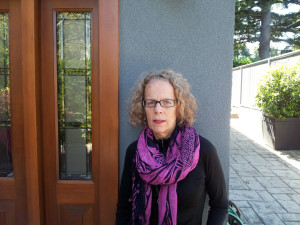Hermann Wirth
Pringle, Heather (M)
Heather Pringle “is a Canadian science writer who specializes in  archaeology.” She has written many articles as well as a number of books and has her own website(a). Among her work is the prize-winning The Master Plan[0032], in which she charts the work of the Nazi Ahnenerbe, founded by Himmler, “whose mission was to search for the lost civilization of an ancient master race.” Included in this fascinating book is an interesting account of the Hermann Wirth’s obsession with Atlantis in the North Atlantic as well as Edmund Kiss’ work at Tiwanaku in Bolivia.
archaeology.” She has written many articles as well as a number of books and has her own website(a). Among her work is the prize-winning The Master Plan[0032], in which she charts the work of the Nazi Ahnenerbe, founded by Himmler, “whose mission was to search for the lost civilization of an ancient master race.” Included in this fascinating book is an interesting account of the Hermann Wirth’s obsession with Atlantis in the North Atlantic as well as Edmund Kiss’ work at Tiwanaku in Bolivia.
*[A recent paper(b) by Pringle and Krista Langlois offers evidence that the Bering Strait during the last Ice Age was in fact a vast area of land the size of Australia and that it provided a crossing point, for humans and animals earlier and for longer than previously believed.
Pringle has also turned her attention to the Vikings in an interesting National Geographic article(c).]*
(a) https://heatherpringle.com/
*[(b) https://www.hakaimagazine.com/article-long/sunken-bridge-size-continent
(c) National Geographic, March 2017 p.34]*
Herrmann, Albert
Albert Herrmann (1886-1945) was Professor of Geography at Berlin University. He was very interested in oriental geography and is perhaps best known for his 1935, Historical and Commercial Atlas of China, which was widely used
His other passion was Atlantis, so between 1927 and 1931 he declared support for Borchardt’s northwest Africa location theory in a number of publications. In 1938 he used is influence to mount a large exhibition in Berlin about Atlantis(a).
He agreed that a large dried-up saltwater lake in Tunisia called Shott el Djerid was originally Lake Tritonis and was known during Solon’s time as the ‘Atlantic Sea’ and further claimed that it had been the location of Atlantis; a theory supported by a number of investigators. In more recent times, Charles A. Rogers is one such advocate of this identification(b).
Herrmann suggested that it was the result of an upheaval of the land, which extended a land barrier between the Shott and the sea. He locates the Pillars of Heracles where this barrier was created. Anton Mifsud has pointed out that the 1st century BC writer Apollonius Rhodius located the Strait of Heracles in ancient Syrtis Minor, now the Gulf of Gabés, apparently supporting Herrmann’s contention. At one point, Herrmann cited as Atlantis, the village of Rhelissa, near the mouth of the old River Tritonis, which flowed into the Gulf of Gabes.
Herrmann disagreed with Plato’s 9,000 years and proposed that he had instead been referring to the 13th or 14th century BC.
Finally, Herrmann, in an effort to match this location with the Platonic narrative, felt obliged to reduce its dimensions by a factor of thirty. He claimed that the priest or interpreter at Sais had erred in the conversion of the Egyptian ‘schoinos’ into Greek stadia. The schoinos was adopted by the Greeks, where it must be noted that it, as well as the Geek stadion, had variable regional values; the number of schoeni per stadion varied between 30 and 120.
In a later book[386], Herrmann shifted his view from his original stance suggesting that Tunisia had been just a colony under the influence of a culture originating in Friesland, later to become famous as the source of the Oera Linda Book (c). It is not impossible that the introduction of a Northern European slant to his theories was the consequence of political pressure in Germany at the time, typified by Borchardt being imprisoned because of his Jewish background. Vidal-Naquet describes Herrmann as ‘an avowed Nazi’ [580.121] so pressure may not have been necessary. (a) >His revised conclusions appear to mirror the views of fellow nazi Hermann Wirth.<
(b) https://www.academia.edu/36855091/Atlantis_Once_Lost_Now_Found
Wirth, Hermann
Hermann Wirth (1885-1981) was a Dutch historian who became one of the co-founders of Himmler’s Ahnenerbe-SS. He was obsessed with Atlantis  and sought to prove that it had existed in the North Atlantic where he believed that it had stretched from Iceland to the Azores. He thought that the only parts of Atlantis to remain above water after its submergence were Cape Verde and the Canary Islands. Wirth named this North Atlantic Atlantis, Thule after the ancient writer Pytheas. He also concluded that a pure monotheistic religion had originated in a common homeland, possibly Plato’s Atlantis(a).
and sought to prove that it had existed in the North Atlantic where he believed that it had stretched from Iceland to the Azores. He thought that the only parts of Atlantis to remain above water after its submergence were Cape Verde and the Canary Islands. Wirth named this North Atlantic Atlantis, Thule after the ancient writer Pytheas. He also concluded that a pure monotheistic religion had originated in a common homeland, possibly Plato’s Atlantis(a).
The Nazis who came to believe that the Aryan race had originated on Thule adopted the idea. Wirth also translated the controversial Oera Linda Book, using it to support the party line on Germanic origins(b).
